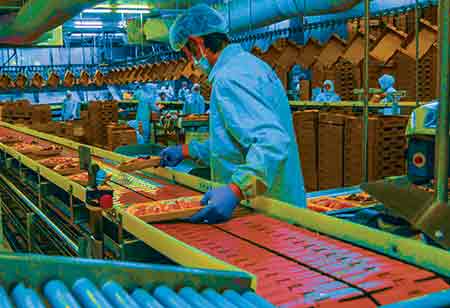Thank you for Subscribing to Food Business Review Weekly Brief
- Home
- Topics
- Alternative Proteins and Plant Based Food
- Beer and Wine
- Canned Beverages
- Coffee And Tea
- Food and Beverage Consulting
- Food and Beverage Financial Service
- Food And Beverages Marketing
- Food Distributors
- Food Ingredients
- Food Sustainability
- Plant Based Food and Beverages
- Seafood Suppliers
- Supplement Manufacturing
- Wine Investment
- News
- Vendor Viewpoint
- CXO Insights
- Conferences
- Newsletter
- CXO Awards
-
Importance of Food Safety Testing Technologies
Food safety testing is essential to ensure consumer health and well-being and a vital element of quality assurance processes for food product manufacturers.

By
Food Business Review | Tuesday, February 15, 2022
Stay ahead of the industry with exclusive feature stories on the top companies, expert insights and the latest news delivered straight to your inbox. Subscribe today.

Food safety testing ensures customer buys healthy and quality food.
FREMONT, CA: Food safety testing is essential to ensure consumer health and well-being and a vital element of quality assurance processes for food product manufacturers.
Microbiology testing detects living organisms and pathogens that can harm consumers and degrade food quality. Other contaminants, such as heavy metals, will be discovered through chemistry testing, which will impact consumers and product quality. Environmental monitoring assessments examine the facilities where food products are manufactured.
Let us know some of the food testing aspects:
Indicator Organisms provide early warning
Pathogen testing is an important aspect of food safety and quality assurance. However, testing numerous batches of goods may not always be possible. Testing for indicator organisms in food can operate as an early warning indication for circumstances of suspected contamination or spoiling in cases when more frequent or large-scale testing isn't practicable. Indicator organisms in food are often much easier to detect than pathogens and can be used to assess the product's quality (i.e. for spoiling) and the environment's safety. These indicator species often point to microbial loads and contamination sources in a manufacturing environment. Coliforms, Enterobacteriaceae, yeasts and moulds, and lactic acid bacteria are among them (LAB).
Mycotoxins are a persistent threat
Mycotoxins can be exceedingly toxic and even lethal to humans and animals, causing acute poisoning and long-term effects such as cancer, immunological weakness, and organ damage. Humans are exposed either directly or indirectly by the ingestion of infected foods or animal or animal by-products, such as milk from a cow that ate contaminated wheat.
Proper testing, inspection, drying, and storage can reduce food's health concerns associated with mycotoxins. While there are guidelines for the maximum permissible level of mycotoxins in foods, due to the mold's capacity to infiltrate deeply into food products, it is essential that farms, food processors, distributors, and other food sector organizations do thorough testing.
A regular food safety testing programme is the most effective way to protect products from physical, chemical, and bacterial contamination at each point of the supply chain, ensuring consumer health and business profitability. A comprehensive food safety programme may offer information on the environment, the manufacturing process, and the finished product and identify any potential pollutants.






